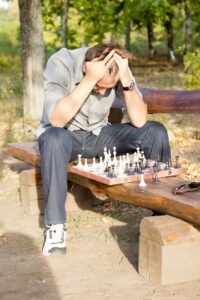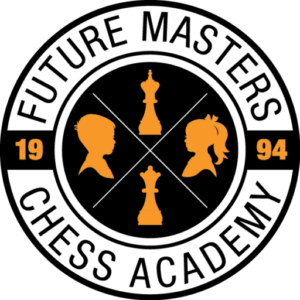
Is Chess Hard?
“Chess is easy to learn, but it is hard to master.” Would you believe me If I were to tell you that a four-year-old can learn chess? We have learned from working with thousands of children ages four to fourteen over hundreds of thousands of games that chess is relatively easy to learn. Every single one of them has learned to play a full game within our first 2 months of 1-hour classes a week. Our students not only pick up the game but also in most cases beat their parents within the first two years of training with our Future Masters Chess Academy.
We progress them in 5 stages called our Fundamentals class. First is fundamentals. We want them to know who the pieces are, how they move, where they want to move, when they want to move and why they want to move and to what squares. One of the biggest fundamental skills is knowing the board. We introduce them to the board and squares. They learn each square has a first and a last name. The first name is a letter the last name is a number. We teach them how the center of the board is the most important part of the board. Did you know that? Watch out, you may learn just by reading this. We illustrate this point by saying getting to the center is like climbing a mountain, when you get to the top you can see all over the sixty-four squares of the board.
Second, we teach them how the pieces move. We even have them get out of their chairs and move like the pieces. The Rook. A straight-forward moving piece, up, down, side-to-side like a tank. Then the king, one step at a time, he had too many hamburgers so moves slow. Next the pawn a straight slow marching soldier who only moves forward. But the lowly pawn captures diagonally. It is so funny to hear a child say diagonally. But before you know it, they do. The knight moves in an L shape. (Hop, Hop, Turn) Oh my they love hopping around. Then her brother the bishops. One loves green and stays on green squares the other loves white things and stays on white squares. They too move diagonally but if they go on the wrong color, they get sick. We finally teach how the queen the most powerful piece moves. They just delight to run like a queen in every direction.
They are now acquainted with the six different pieces on a chess board, the King, the Queen, The Rook, The Bishop, The Knight, and the Pawn. Our third stage is the setting up of the pieces on the board. We compare the pieces to a family. The king is the father. He goes in the middle. The queen is the mother. She goes right beside the father. The bishop is the older brother. He goes next to the father and mother. The knight is the older sister. She goes next to her brother. The rook is the castle where they live. He goes at both ends in the back row. The pawns are 8 little children. They are placed in the second row in front of the big pieces. Sometimes we vary the story and say something like the king and queen got married by the bishop, the religious guy, they rode the horse or knight home to the castle, and they had 8 children. You get the point, just make it up but just make sure it is interesting and they will never forget.
Fourth, they learn the value of the pieces. We sing this. “The queen is worth 9 and the rook is worth 5 so we must keep them both alive. The bishop is worth three and the knight is worth the same, but the king is worth the game. Now the pawn is worth 1 and the pawn game is so much fun.” Then we repeat having them fill in the numbers. It is easy to remember the value because we show them the number of moves each piece can make from the center of the board. The Queen 27 the Rooks 14 So the queen is almost double the rooks. The bishop 13 and the knight 8 but fact that the knight can jump over pieces gives her similar powers to her brother the bishop. The pawn one square at a time so worth 1 point. And the King well you capture the king and game is over.
The fifth and final stage teaches them how to open a game properly. There are 3 things only to remember when starting a game. 1) Develop your pieces toward the center. 2) Control the center. 3) Castle your king. We call it DECK. (Develop, Control center, Castle king), we love acronyms while instructing our kids. Teaching chess by telling stories is one key to making chess easy to learn. Story Time Chess, the 2021 Toy of the Year Award Winner, has proven this. They teach kids aged 3 and up through stories also.
So yes, we have created an easy way to teach chess to kids as young as 4 years old. We call it our Contact Method which will be a future blog itself. Why is it relatively easy to teach a toddler this most complicated of games? And how can they then go on to beat their parents and other adults so quickly? We will answer these questions in our next blog.

